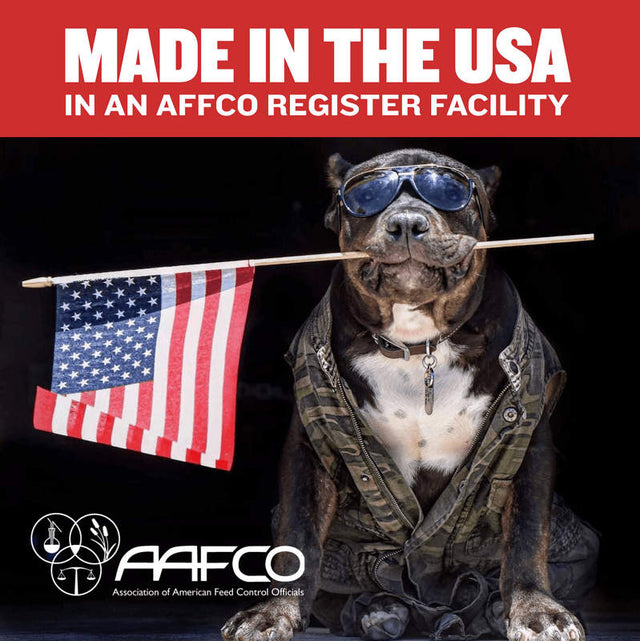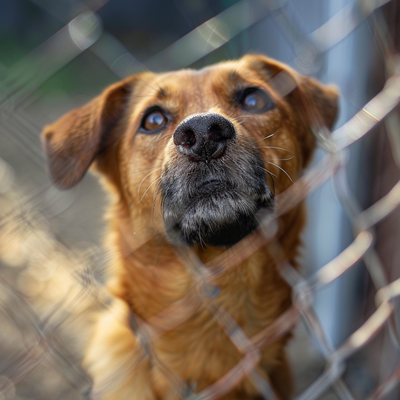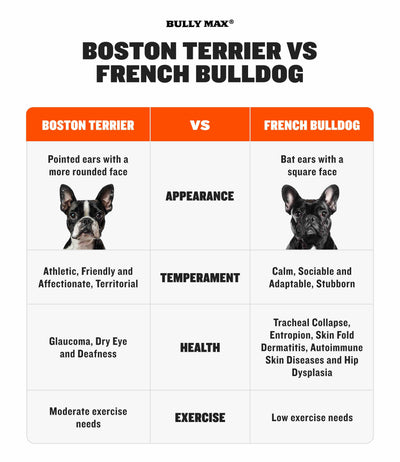How to Help With Separation Anxiety in Dogs
Separation anxiety can be a big challenge. It’s natural for dogs to form an attachment to their owners, but that doesn’t mean they should turn into a basketcase or destroy the house every time you go somewhere without them.
Maybe your dog becomes anxious and distressed whenever you leave the house. Maybe your dog gets into all kinds of trouble while you’re away. Meanwhile, you feel guilty about it and you know your dog is suffering needlessly over what’s basically a misunderstanding.
It can be a frustrating situation. The good news is that there are ways to resolve separation anxiety in dogs, and we’ve written this article to teach you how. If your dog is showing signs of separation anxiety, it’s important to handle it the right way. Using the wrong training methods can make things a lot worse.
We’ll also be discussing the symptoms of separation anxiety, the difference between separation anxiety and a lack of house manners, as well as the underlying causes that can contribute to separation anxiety.
Let’s get to it!

How to Know if Your Dog Has Separation Anxiety?
There are quite a few signs that can indicate that your dog is dealing with the stress of separation anxiety. Dogs suffering from separation anxiety will usually exhibit multiple symptoms simultaneously. In the sections below we’ll explore the symptoms of canine separation anxiety more in depth.
1. Chewing, Digging and Destruction
Dogs experiencing separation anxiety can sometimes behave very destructively. When under distress they may chew on inappropriate things such as carpets, furniture, window sills, door frames, etc. They might damage household objects or try to dig under doors.
This can even potentially result in injury. Keep in mind that this behaviour isn’t always necessarily caused by separation anxiety. Dogs with separation anxiety won’t exhibit this behaviour when their caregiver is present, but only in their caregiver’s absence. It’s also likely that they will show other signs of separation anxiety as well.
2. Escape Attempts
Escape attempts are another symptom of separation anxiety, and in some cases they can be desperate and dangerous. When left alone your dog might try to dig or chew through exit points such as doors and windows. When escape attempts are related to a dog’s separation anxiety, they only occur when the caregiver is absent.
3. Coprophagia
Coprophagia is the consumption of feces. Some dogs will consume their own excrement when they are kept in isolation. Although the thought of such things sounds disgusting to us, this is not an uncommon issue. Though if your dog is eating feces, it’s a good idea to have them seen by a veterinarian, especially if this is accompanied by other medical symptoms such as your dog losing weight.
Keep in mind that if your dog engages in such behaviours when you’re around, it is not likely to be connected to separation anxiety.
4. Barking
Another common behaviour of dogs suffering from separation anxiety is excessive barking. Your dog may whine or howl as you prepare to leave or after you’ve left. You’ll know this is a sign of separation anxiety if your pup doesn’t bark excessively when you are around.
It’s also likely that your dog will seem very anxious as you prepare to leave, such as drooling and/or panting excessively. You might also notice your dog pacing around in circles or back and forth in a line.
Why Do Dogs Develop Separation Anxiety?
There’s no exact formula to explain why some dogs develop separation anxiety and others don’t. However, there are certain situations and contributing factors that are associated with developing separation anxiety, such as the loss of a previous guardian. Next, we’ll explore the different elements that cause or contribute to separation anxiety in dogs.
Rescue Dog Separation Anxiety
While all dogs can suffer from separation anxiety, rescue dogs in particular are more likely to deal with the condition. Separation anxiety itself can be the cause of dogs being abandoned or surrendered in the first place. And to dogs without any pre-existing separation anxiety, abandonment can also be a major contributing factor to developing it.
Being surrendered to a shelter or abandoned can be an extremely traumatic experience. Dog’s lives are turned upside down, their routines completely disrupted. Losing connection with their previous owners and homes can be painful and confusing.
Situations like these can contribute to dogs becoming overly insecure and attached. Any change of guardian or family situation can bring about this form of anxiety.
Puppy Separation Anxiety
In addition to rescue dogs, young pups are also more likely to suffer from separation anxiety. When pups have never really been left alone before this can naturally cause some fear to arise in the first couple of times you leave the house.
Some puppies are affected more traumatically than others by being separated from their mothers, and this can also potentially lead to separation anxiety later in life. Puppies’ unique personalities come into play too, as some simply have a lot more of an independent spirit than others.
Young dogs thrive on a consistent routine, and a chaotic schedule can contribute to clingy behavior. It has even been suggested that a lack of exercise can contribute to separation anxiety.
Puppyhood often comes with an array of behavioral issues other than separation anxiety, and puppies can obviously be destructive for other reasons. They are often teething and still learning house manners, potty training, etc.
So it’s important to discern the cause of your puppies’ behavior. Do they only act out when left in isolation, or does it happen at other times as well?
It’s also important to respond to signs of separation anxiety as quickly as you can. The sooner you can implement appropriate training to resolve the separation anxiety, the better.
Change in Residence
Moving into a new home or apartment can also lead to increased anxiety levels. Moving can be a confusing experience for your dog. It disrupts the rhythm of a daily routine, and it can take some time for your furry friend to adapt and grow comfortable in a new location. The loss or absence of a family member can cause anxiety as well.
How to Help a Dog With Separation Anxiety?
As a rule, you never want to punish a dog for separation anxiety, because it won’t help the situation. Here we’ll explain some of the top methods that can be used to help dogs with mild separation anxiety. We’ll then go on to discuss more advanced training methods for more severe cases.
Some cases of separation anxiety can be resolved with simple counterconditioning. Counterconditioning is the process of associating negative triggers with something that the dog really enjoys, such as a special treat. Over time your dog becomes conditioned to associate the negative cue with a reward.
For example, you might offer your dog a special treat only as you’re leaving the house. Your dog will learn that she only gets her favorite treats when she is home alone. You can also work with the pre-departure cues.
Your canine friend may come to associate being left alone with you grabbing your keys or putting on your coat. Such cues may be extremely upsetting to your dog. So what you can do is introduce these cues randomly throughout the day to decondition your dog from fearing them so much.
You might put on your coat and grab your keys and then just sit on your couch when you’re not going anywhere. This will take away the power that these triggers hold over your dog.
Another thing that’s surprisingly important is exercise. A well-exercised dog is much more content and likely to relax when left alone. Physical activity reduces stress, brings satisfaction and fulfillment, and tires your dog out in a good way.
And if you’re looking to get your dog some extra exercise without having to go for extra walks, there are some great interactive dog toys out there that will keep your dog active and entertained.
Dog Separation Anxiety Training
Sometimes separation anxiety goes beyond the norm, and falls into the category of moderate to severe separation anxiety. Here are 3 training methods that will help to resolve this anxiety.
1. Crate Training
Crate training can be a great way to teach your dog to enjoy being alone. Crates are not inhumane or abusive, you just have to use them in an appropriate way. You want your dog to associate their crate with safety, comfort, toys, and tasty treats.
Many dogs feel more comfortable having their own safe and personal space to settle into when they are left alone. Being comfortable in a crate is a great step towards resolving separation anxiety. However, there are some dogs who just aren’t well suited to being in a crate.
If your dog shows signs of increased distress after being put into a crate, such as heavy panting, barking, and trying to escape, then crate training is not a good option for your dog. Instead, you might try using dog gates to contain your dog to one room.
This can be a helpful way to keep your dog safe and out of trouble while you are still in the process of resolving his separation anxiety.
2. Be Calm; Don’t Feed into Your Dog’s Behaviour
You want to train your dog to be calm and independent by interacting with them in a relaxed manner. Your dog is taking cues from the way you carry yourself, so don’t make a big deal out of departures and arrivals.
Never play it up or make a big production out of your leaving. Simply give your dog a pet and walk right out. You want your dog to be calm when you’re leaving.
It’s also important that you don’t feed into your dog’s anxiety-related behaviors. If your pup is extremely excited as you’re returning home, wait until your dog calms down a bit to love her up. You can acknowledge her and greet her when you arrive, but wait until she relaxes and settles a bit to give her any more affection.
Even when you are home your dog should be comfortable being in a different room than you. Play it cool and never encourage clinginess. Reward independence with affection, and never reward your dog for demanding attention.
3. Graduated Departures
Graduated departures expose your dog to very small amounts of controlled separation, and gradually increase the periods of separation as your dog grows more secure and confident. You want your dog to learn that separation can be rewarding.
Your dog will gradually become more acclimated to separation through continued exposure to longer and longer periods of time. It’s important to keep in mind that this training method will not be effective if your dog becomes anxious during the process. You have to work to some degree within your dog’s comfort zone, so be careful not to push the envelope too much.
We’ll begin with “stay” exercises. You’ll want to gradually increase the amount of time you make your dog stay, offering a reward such as a special treat for a successful stay. You’ll then advance to telling your dog to stay, and then leaving the room for a period of time.
Start in a bedroom or bathroom, and then progress to telling your dog to stay before briefly exiting the house. From here, you work on short departures. Start with absences as short as 10 seconds, and then gradually build. Offer your dog a treat right before each separation.
You’ll have to use careful judgment when increasing the periods of absence, because if you overdo it separation anxiety can worsen. If your pup is freaking out, go back to a shorter period of absence that she is more comfortable with. And remember to project an air of relaxed calmness during departures and arrivals.
You’ll need to progress somewhat slowly to keep your dog comfortable with the process. Expect this process to take a few weeks.
Reach Out to Your Veterinarian
When all else fails, you may need to talk to your veterinarian about drug therapy as a possible solution for the issue. Sometimes severe separation anxiety does require medication for treatment. Antianxiety medications can be used in conjunction with training and can speed up and aid the process significantly.
There are also natural remedies that can relieve anxiety and help the training process along; just remember to talk to your vet before giving your dog new substances.
Separation anxiety can be a severe problem, but with the right technique and a little effort, it’s usually very treatable. It might take a little patience, but it’s well worth it.
By the way, if you haven’t seen our top-rated high protein dog food, make sure to check it out. It’s an all life stages formula with human-grade ingredients and full label disclosure. It makes a great reward for separation anxiety training, and we’re confident your dog will love it.












1 comment
My dog, rocky 13 years old DNA tested to be 63% German shepherd, beagle and labrodor retriever, has now developed severe anxiety, I just moved to a different apartment this happened there, but now, 3 months at our new apartment, he can’t be left alone at all. He freaks out barking , following me, I don’t know what to do because I am getting so anxious, too, and I haven’t left the apartment in one week. I am taking rocky to a different veterinarian this coming Monday. My first veterinarian said give him MELATONIN, AND THAT SEEMED TO HELP FOR A FEW DAYS, AND UPPING THE AMOUNT OF MELATONIN IS DOING NOTHING. PLEASE HELP ME HELP MY ROCKY TO RELAX BECAUSE HE IS SUFFERING AND NOW ME. ONE MORE THING, Rocky is doing is barking going at the door, he has a different barks, gravelly, is he terrified of my new apartment? Do you think anti-anxiety medication, prescribed by a veterinarian will treat his anxiety. Thank you, sincerely Joan Jaszczult 973-845-3436 jj9738453436@gmail.com 60 Potomac Drive in Basking Ridge, New Jersey 07920-3199